Brazil Flag Meaning
Green field with yellow diamond containing a blue celestial globe with the motto 'Ordem e Progresso'.
- Continent
- South America
- Adopted
- 1992
- Ratio
- 7:10
- Colors
- green, yellow, blue, white
- Designer
- Raimundo Teixeira Mendes, Miguel Lemos, Manuel Pereira Reis, and Décio Vilares

Symbolism
Green Field: Represents Brazil's vast forests, particularly the Amazon rainforest, and the lush vegetation of the country.
Yellow Diamond: Symbolizes Brazil's mineral wealth, especially gold, and the rich natural resources of the nation.
Blue Circle: Represents the night sky over Rio de Janeiro on November 15, 1889, the day the Republic of Brazil was proclaimed.
Stars: The 27 stars represent Brazil's 26 states and the Federal District, positioned as they appeared in the sky on the founding date.
Banner with Motto: 'Ordem e Progresso' (Order and Progress) reflects the positivist philosophy that influenced Brazil's founders and their vision for the nation.
History
- 1822-1889: Imperial Brazil used a flag with green and yellow colors representing the House of Braganza (Pedro I) and House of Habsburg (Maria Leopoldina).
- November 15, 1889: Current design adopted four days after the proclamation of the Republic, replacing the imperial coat of arms with the celestial globe.
- 1960: New star added to represent the newly created state of Guanabara (later merged with Rio de Janeiro state).
- 1968: Another star added for the creation of Acre state, bringing the total to 23 stars.
- 1992: Current version established with 27 stars representing all states and the Federal District, including stars for Amapá, Roraima, Rondônia, and Tocantins.
Trivia
- Brazil's flag is the only national flag to contain an astronomical map accurate to a specific time and place.
- The constellation Southern Cross (Crux) is prominently featured and appears on several South American flags.
- The motto 'Ordem e Progresso' comes from Auguste Comte's positivist motto: 'Love as a principle and order as the basis; progress as the goal.'
- Each star corresponds to a specific Brazilian state, with the North Star (Polaris) representing the Federal District.
- The flag must be replaced whenever it becomes damaged or faded - there are specific protocols for its respectful disposal.
- The star Spica represents the state of Pará and is positioned above the banner, symbolizing the northern territories.
- Brazil's flag influenced the design of several other South American nations' flags through its use of celestial imagery.
Related Countries
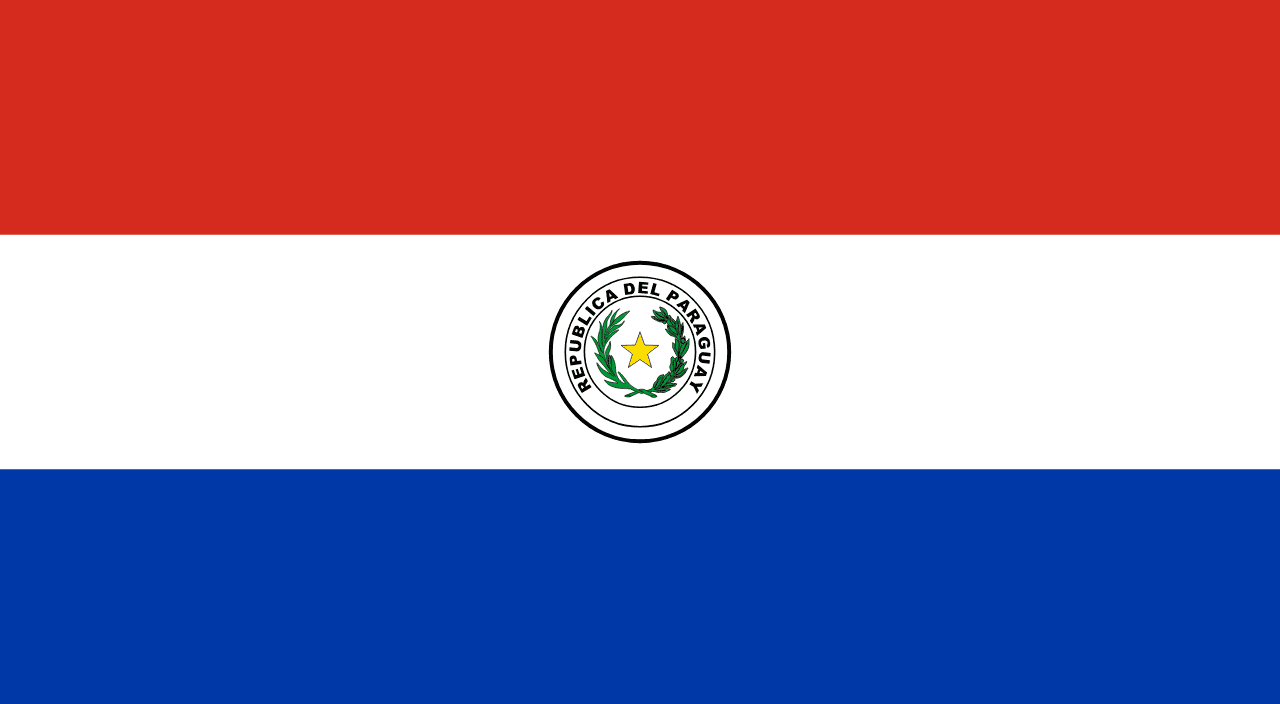
Paraguay
South America
A horizontal tricolor of red, white, and blue. Unique among national flags, Paraguay’s flag has different emblems on the obverse and reverse sides: the national coat of arms on the front, and the treasury seal on the back.
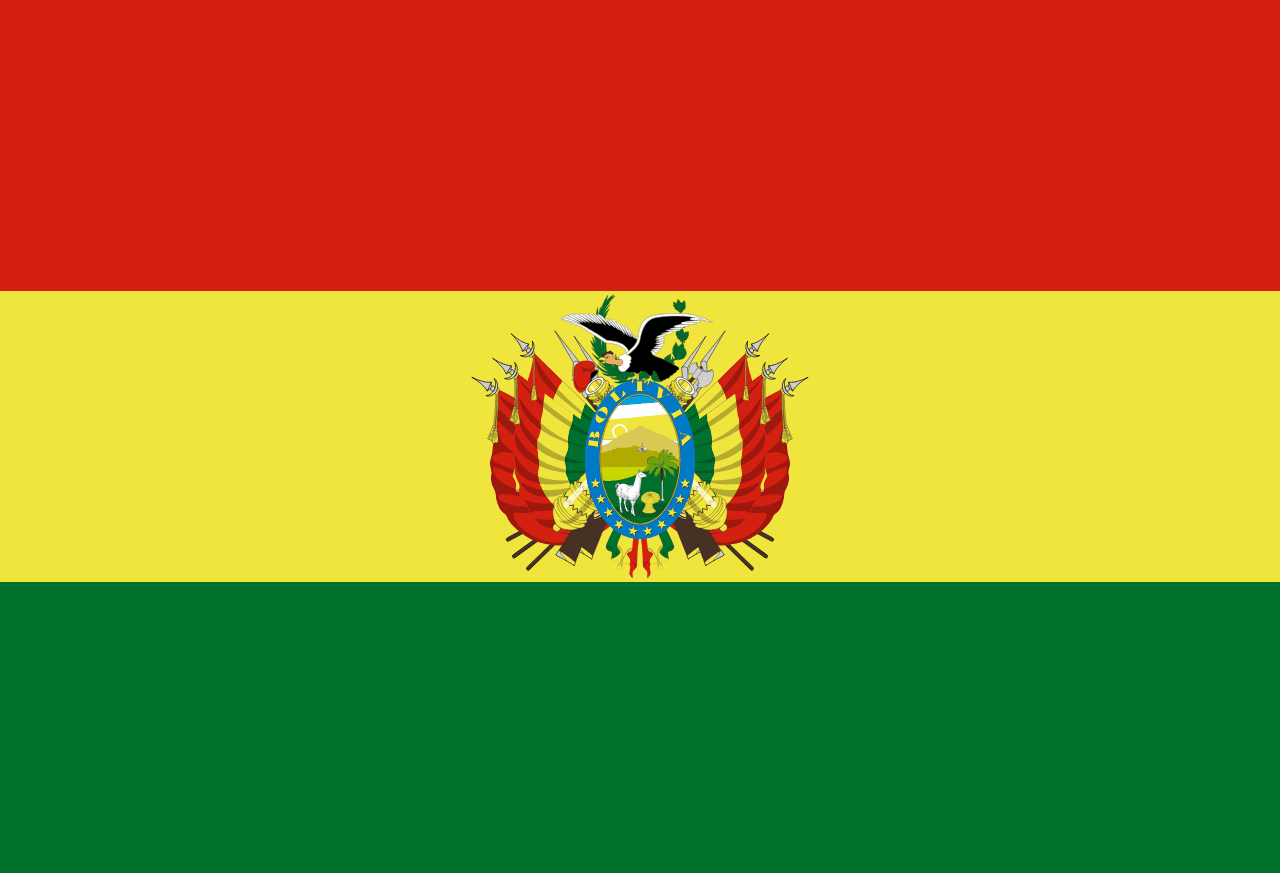
Bolivia
South America
Three horizontal stripes of red, yellow, and blue, with the national coat of arms centered on the yellow stripe in the state flag, representing the valor of the army, the mineral wealth of the nation, and the sky and sea that Bolivia once possessed before losing its coastline to Chile.
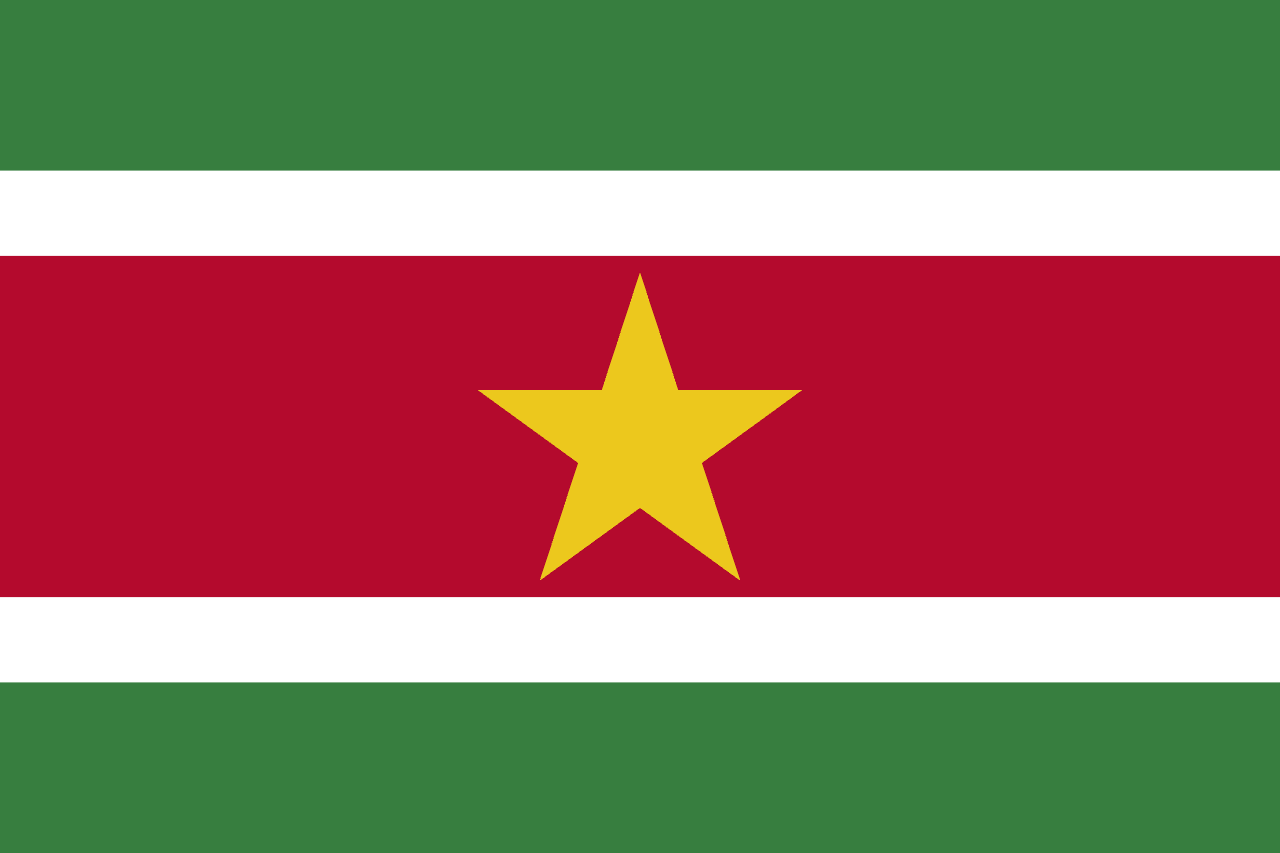
Suriname
South America
Five horizontal stripes of green, white, red, white, and green with a yellow five-pointed star in the center of the red stripe, representing the country's forests and agriculture, peace and justice, unity and progress of the people, hope and golden future, designed for independence in 1975.
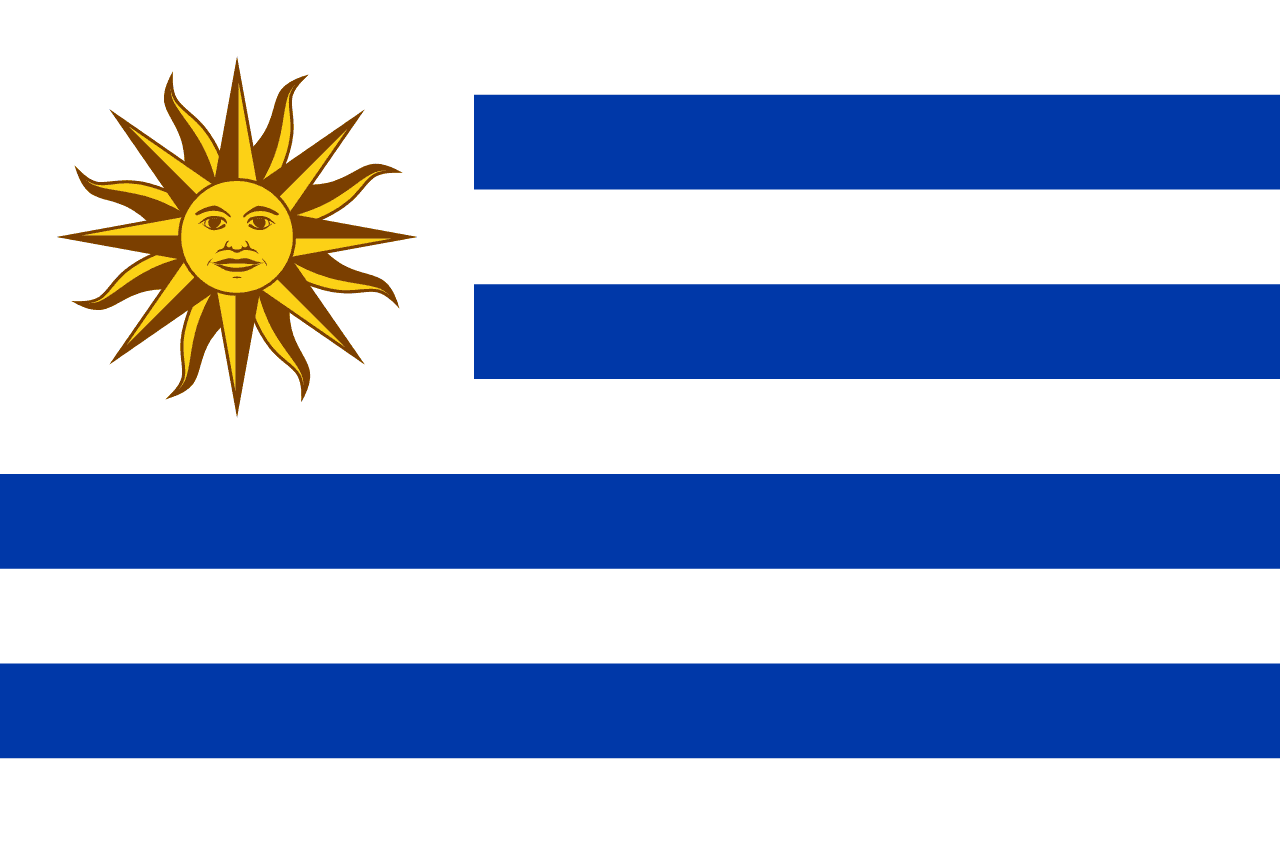
Uruguay
South America
Nine alternating horizontal stripes of blue and white with a golden sun (Sol de Mayo) in the upper left canton, representing the nine original departments of Uruguay, the clear skies and peace, and the May Revolution that inspired South American independence movements.

Guyana
South America
A green field with a yellow arrowhead bordered in white pointing toward the fly, and a red triangle bordered in black at the hoist, known as 'The Golden Arrowhead,' representing the country's natural resources, diversity, and forward progress.
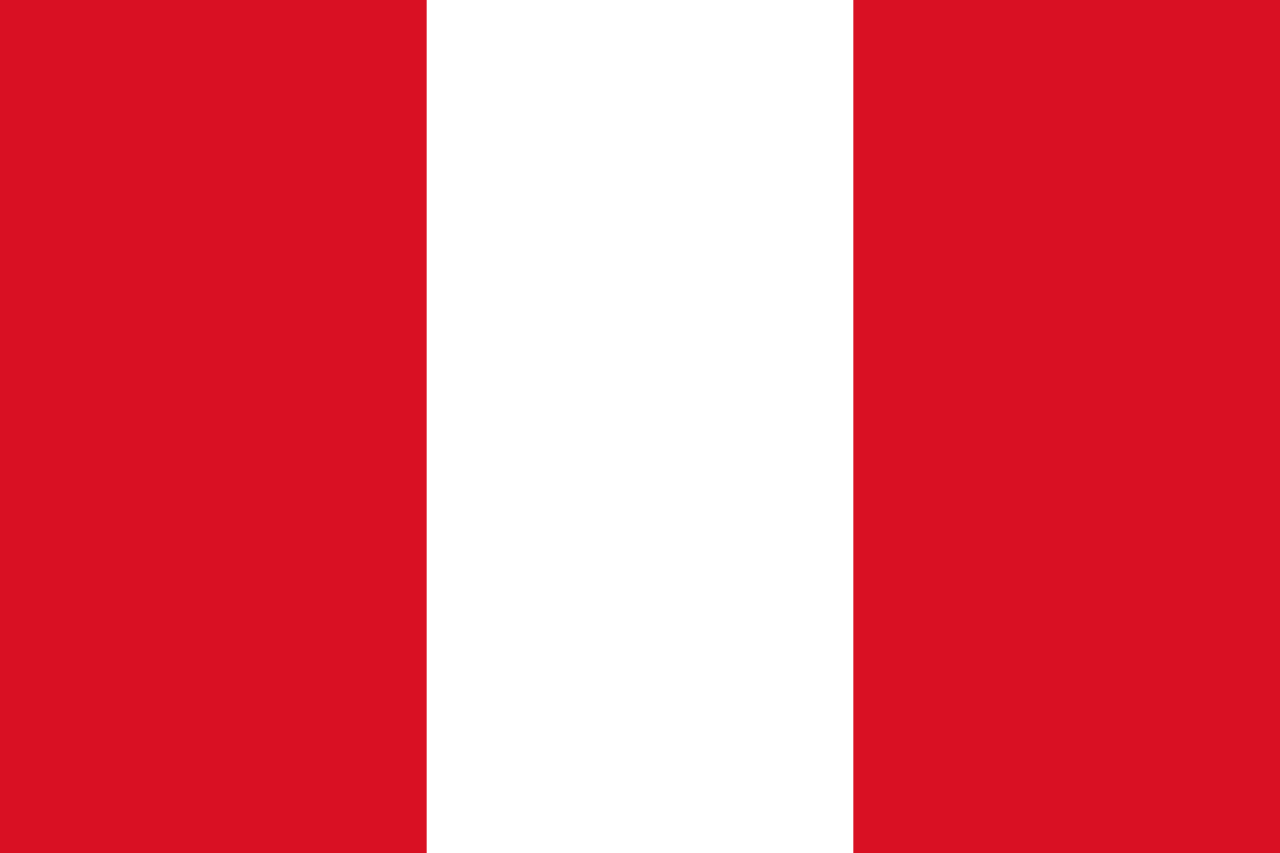
Peru
South America
A vertical triband of red, white, and red. The civil flag is a simple triband, while the state flag includes the national coat of arms in the center white band. The design reflects Peru’s struggle for independence and its natural richness.